Iran Ethnic Groups | Language, Traditions, and Culture
Iran, a country with a long history, is home to many different ethnic groups. This variety is more than just a complexity of Iranian culture; it is a defining feature. Iran has become a multicultural center due to these various ethnicities.
The people in Iran are called Iranian people. Persians are the biggest group within this category. Kurds, Gilaks, Mazandaranis, Lurs, Tats, Talysh, and Baloch are some of the other smaller communities, each with their own distinct heritage. These groups have all influenced Iranian customs, languages, and traditions.
A significant minority, making up 15-24% of the population, are the Turkic peoples. Azeris are the largest Turkic group and the second-largest ethnicity in Iran. Turkmen and Qashqai communities also add to the cultural mix.
The of Iran ethnic groups makes the country a place where visitors can experience a variety of cultures. From Persian architectural styles to the music and dance traditions of the Azeris and Kurds, each region offers a unique perspective on Iranian life.
History of Iran's Ethnic Groups
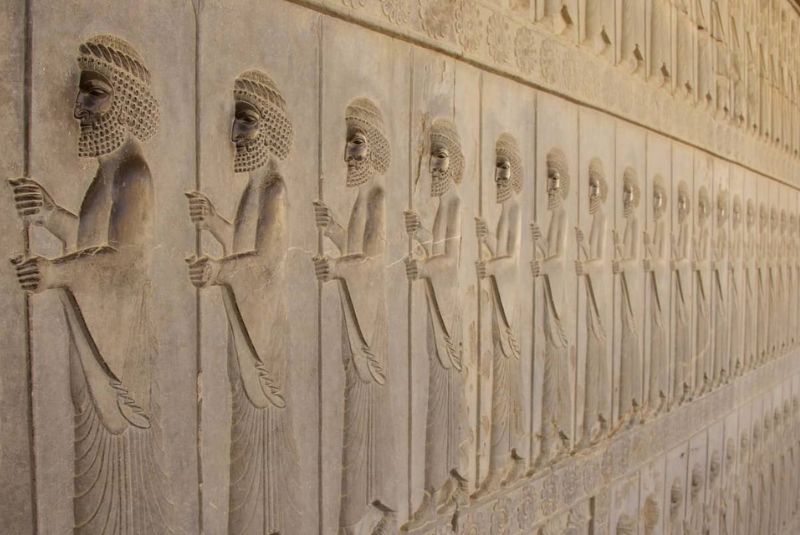
Iran's ethnic diversity is a fascinating blend of history, geography, and conquest.
Around 2000 BC, Indo-Iranian peoples, ancestors of modern Iranians, migrated from the Eurasian steppes. They weren't a single group, but various Iranian tribes with related languages and cultures. The Medes and Persians, who formed powerful empires later, belonged to this group.
It's important to clarify the term "Aryan." Originally, it referred to a linguistic group, not a race. However, the term has been misused historically and can be confusing. It's best to use "Iranian peoples" when referring to this specific group.
Iran wasn't a blank slate. Civilizations like the Elamites thrived in southwestern Iran before the arrival of Iranian peoples. These groups interacted and influenced each other.
The powerful Persian empires, like the Achaemenids and Sassanids, absorbed neighboring territories. This brought people of various ethnicities under one roof, creating a mix over time.
Sitting between Central Asia, the Caucasus, and Mesopotamia, Iran served as a natural bridge for migration. Groups like Azeris (Turkic) and Kurds moved through these regions, settling in parts of Iran.
While Iran has central plains, it's also ringed by mountains. This created pockets where ethnicities like the Gilakis and Mazandaranis developed distinct identities.
Compared to some regions, Iran wasn't constantly overrun by major empires. While conquered by Arabs and others, these rulers often adopted aspects of Persian culture, leading to a blend rather than complete replacement.
Today, Persians are the largest ethnic group, with their language and culture holding a strong national influence. Azeris, Kurds, Lurs, Arabs, and Baloch make up Iran significant minorities, each with their own languages and traditions.
While empires fostered some cultural unification, Iran's ethnic groups often retained their languages, customs, and traditions. This limited assimilation contributed to the country's enduring diversity.
| Suggestion: Why Iran is Not an Arab Country? Learn the Difference!
The List of Iran's Major Ethnic Groups
- Persians (The Largest)
- Azeris
- Kurds
- Lurs
- Balouchs
- Turkmens
- Arabs
- Mazanis
- Gilakis
- Taleshis
1- Persians
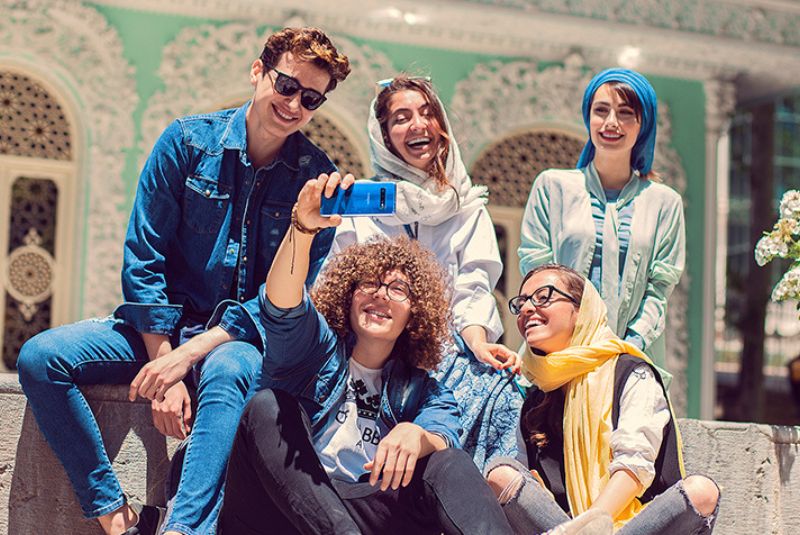
The Persians are the largest ethnic group in Iran, constituting roughly 61% of the population. Their origins trace back to ancient Iranian tribes who migrated to southwestern Iran (Fars province) between 1500 and 1000 BCE. These tribes played a pivotal role in establishing powerful empires like the Achaemenid Empire, which boasted vast cultural, political, and social influence across much of the ancient world.
Historically, the entire region was known as Persia, leading to the misconception that all Iranians are Persians. However, since 1935, "Iran" has been the official designation for the country. Despite this shift, Persian cultural influence remains strong, with Farsi, the Persian language, serving as the dominant language of Iran.
Persians are traditionally concentrated in central and western Iran, inhabiting provinces like Tehran, Isfahan, Fars, and regions of Khorasan. Their presence extends to parts of northern, southern, and eastern Iran as well. This geographic distribution reflects the historical dominance of the Persian people.
The influence of Persians extends beyond Iran's borders. Many Iranian immigrants, particularly those in Western countries, hail from Persian-speaking cities like Tehran. This global presence further underscores the significance of the Persian ethnic group.
| Related: Are Iranians Tourist Friendly?
| Read more: Faravahar as a Universal Symbol of Unity
2- Azeris
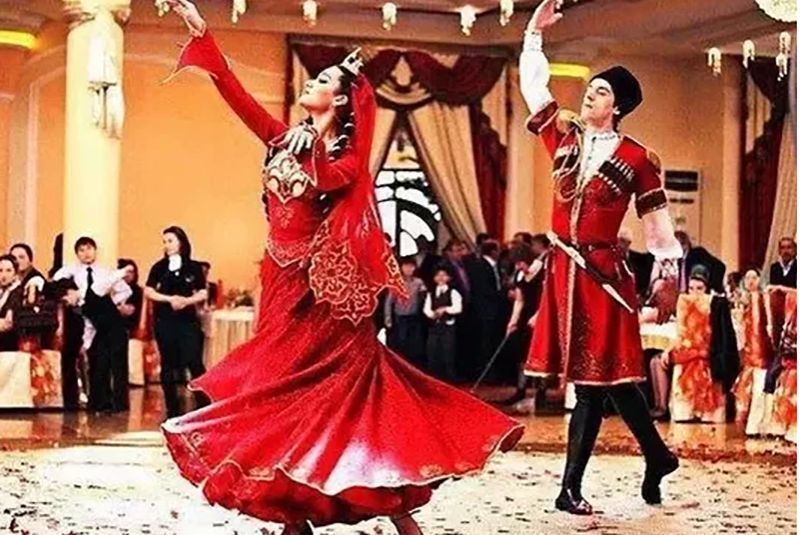
The Azeris are a significant ethnic minority in Iran, estimated to constitute around 25% of the population. They are primarily concentrated in the northwestern region of Iran, with Ardabil province boasting the largest Azeri population. However, Azeri communities can also be found in other provinces, including East Azerbaijan, West Azerbaijan, Zanjan, and parts of Hamedan, Gilan, Tehran, Qom, Arak, and Ghazvin.
The Azeri language, closely related to Turkish spoken in Turkey, serves as a cornerstone of Azeri identity in Iran. It possesses various dialects, some of which, like Khalkhali, Tati, and Harzandi, even exhibit remnants of the ancient Median language (231-708 BC). Tati, spoken in areas like Hamedan, Zanjan, Qazvin, Karaj, and Saveh, incorporates vocabulary from the Median era.
Azeris are renowned for their deep religious beliefs and strong sense of patriotism. Throughout history, they have played a prominent role in shaping Iran's political landscape. Their fighting spirit and unwavering loyalty have contributed to the establishment and rule of several dynasties in Iran. Additionally, Azeris have consistently fought valiantly against threats to Iran's honor and territorial integrity.
While primarily reserved for villages and cultural events, Azeri traditional costumes showcase vibrant colors and intricate craftsmanship. Women's garments differ slightly depending on marital status. Men's attire typically consists of woolen clothing adorned with delicate embroidery, felt hats, long-sleeved garments, and shawls. Notably, the specific styles of dress vary considerably between villages. Azerbaijan also boasts a rich tradition of folk music and dance, known for its fast rhythms and vibrant energy.
| Suggestion: Discover the similarities between Iran and Italy
3- Kurds
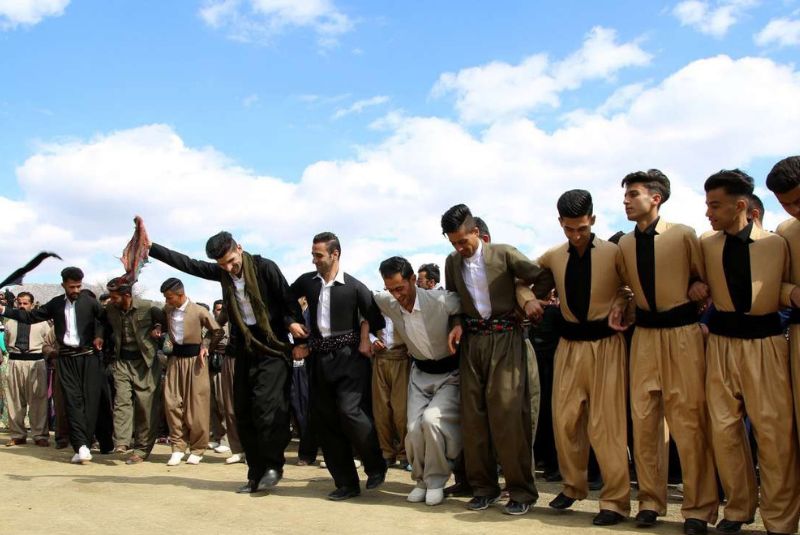
Comprising roughly 10% of Iran's population, Kurds reside primarily in the Zagros Mountains, stretching from Azerbaijan to Lorestan and Khuzestan. This Kurdish population consists of various tribes, including Mangur, Jalali, Milan, and Gharapapaghi. Additionally, nomadic Kurdish tribes can still be found around cities like Saqqez, Sanandaj, and Kermanshah.
Kurdish, a member of the Western Iranian branch of Indo-European languages, is closely related to Persian and Pashto. Spoken across parts of Iraq, Turkey, Iran, Syria, and other countries, it boasts an estimated 25 million speakers.
Kurdish attire is known for its colorful variations, reflecting both social occasions and seasons. These distinct styles serve as a visual marker of Kurdish identity. Men traditionally wear a voluminous shirt (Keras) with wide, tapering pants (Dameh Qofan) and a turban-like headwrap. Historically, adorning waist shawls with cartridges and daggers displayed pride. Women's clothing features loose pants under a dress, a wide shawl, and a short bodice. Head scarves are often elaborately embroidered.
Music and dance are central to Kurdish social life. Different styles like Chupi and Rash Balak involve celebratory circles accompanied by songs and instruments like the Dohol (drum) and Sorna (trumpet). Their musical repertoire extends to flutes, lutes, and string instruments like the Tanbur, Oud, and Do Tar. Notably, the "Do Tablah" is a unique drum used by Kurdish nomads for communication, including calls to war, gatherings, and migration signals.
Kurdish culture is rich in oral traditions. Proverbs, metaphors, and rhyming phrases are woven into everyday speech. Their expressive repertoire includes love songs, celebratory tunes, mournful poems, lullabies, and stories with themes of romance, heroism, epics, and morality.
| Read about: Persian Literature
4- Lurs

The Lur people, primarily residing in western Iran, boast a rich history and cultural heritage. Their ancestral lands lie west of the Zagros Mountains, south of Kurdistan. During the Mongol Il-Khanid rule, their territory was divided into "Luristan Major" and "Luristan Minor," which today correspond to the provinces of Luristan and Kohgiluyeh and Boyer Ahmad, respectively.
Lur society is comprised of various tribes, including the prominent Bakhtiari, Lak, and Kohgiluyeh. Archaeological finds in Luristan reveal a remarkably long human presence dating back 40,000 years. Unearthed tools and artifacts from the Paleolithic, Mesolithic, and Bronze Age eras demonstrate continuous habitation throughout prehistory. The region also boasts a unique artistic legacy, exemplified by the famous Luristan bronzes (1500-500 BC). These artifacts showcase a distinct style and even influenced the development of Persian bronze work.
Among Iranian nomadic groups, the Lurs are known for their strong emphasis on tribal elders. These respected figures hold significant influence within families and communities, serving as mediators and advisors in important matters. The Luri language, belonging to the Indo-European family, is another cornerstone of Lur identity. It is the preferred language of communication and a cherished aspect of their cultural heritage.
| Discover: Nowruz - All About the Iranian New Year
5- Balochs
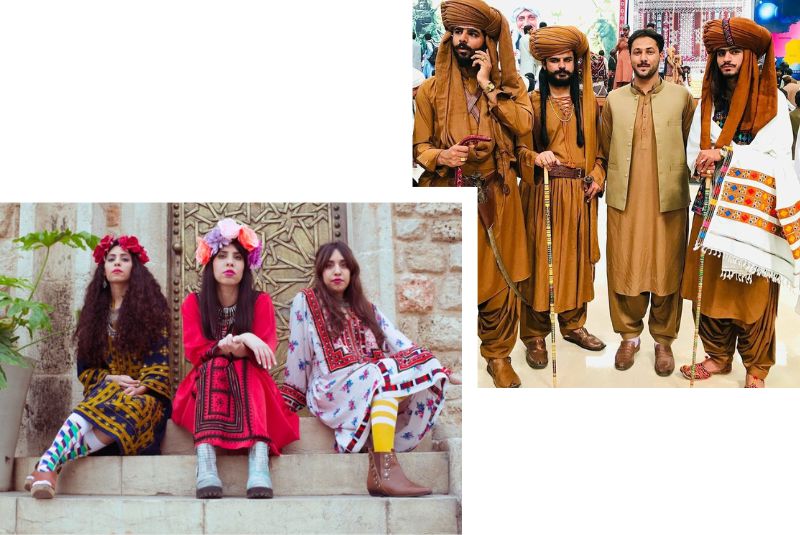
The Baloch, also spelled Baluch or Beluch, are a tribal people primarily associated with the Balochistan region, which encompasses parts of Pakistan, Iran, and Afghanistan. Their estimated population reaches around five million, with a significant presence in Iran's eastern provinces. Cities like Baluchistan, Sistan, Kerman, and parts of Khorasan hold substantial Baloch communities.
Traditionally nomadic, the Baloch culture is undergoing a shift. While some continue their mobile lifestyle, settled agricultural communities are becoming increasingly common. Harsh environmental conditions in Sistan and Baluchistan have also driven many Baloch to migrate to other regions within Iran. These migrations, sometimes permanent, sometimes seasonal, have led to Baloch settlements in Gilan, Mazandaran, Azerbaijan, and Khorasan provinces. Here, they often find employment in agriculture and manual labor.
The Baloch people are organized into numerous tribes, with the Ahmadzai, Mirabdi, Rigi, and Sarawani being some of the most prominent. Their language, Balochi, serves as a vital element of their cultural identity.
Despite the limitations placed on Baloch women by tradition, they play a vital role in the Baloch economy. Due to their simple living conditions and cultural norms, Baloch women are not typically engaged in housework. However, they are expected to learn intricate needlework from a young age, contributing significantly to the family's income through the creation of beautiful embroidered clothing ("Suzanduzi"). Baloch women also excel in other handicraft activities, including pottery, carpet and rug weaving, and even felt-making, traditionally considered a man's domain.
The Baloch hold a deep sense of pride in their Iranian heritage and distinct cultural identity. Known for their nobility, hospitality, honesty, bravery, and work ethic, they have also historically been a warrior people. Their unique customs and beliefs further set them apart.
One of the most visible markers of Baloch identity is their traditional clothing. Adapted to the region's hot climate and demanding lifestyle, Baloch clothing features intricate needlework ("Suzanduzi") practiced by women. These elaborately decorated garments have garnered worldwide recognition as a significant Iranian handicraft.
6- Turkmens
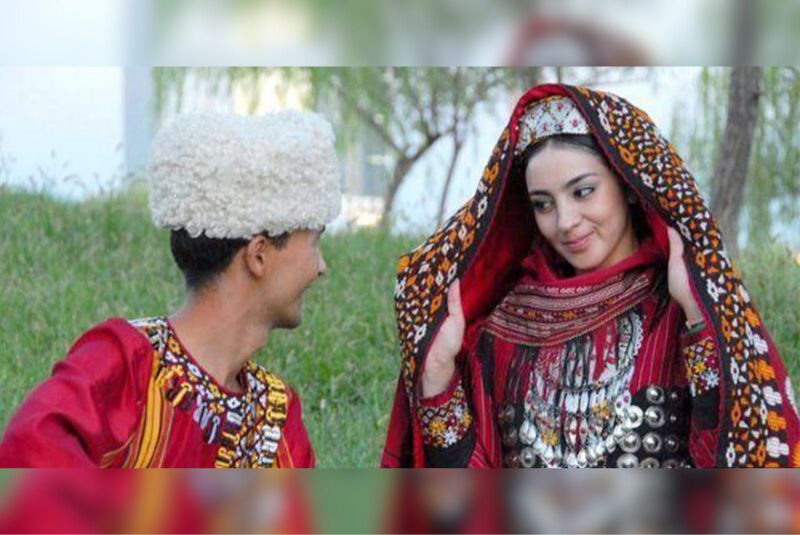
The Turkmens, also known as Turkomans, are Iranian citizens of Turkic descent. Their ancestral roots lie in Central Asia, and they are concentrated in northwestern Iran, primarily in the "Turkmen Sahara" region. This area is situated east of Mazandaran province and north of Khorasan province, bordering Turkmenistan.
The Turkmen people are organized into various tribes, with the Yamut, Goklan, and Teke being particularly prominent. These tribes are primarily settled in the north of Golestan province and the northeastern parts of North Khorasan province, inhabiting cities like Gonbad, Maraveh, Bandar-e Turkmen, and Bojnord. The Turkmen-inhabited areas near Gonbad and Gorgan are predominantly Sunni Hanafi Muslims, and the Turkmen language is widely spoken.
Traditionally, the Turkmen are renowned as skilled nomadic herders. Climatic conditions and historical trends have influenced their lifestyle, leading them to migrate seasonally with their herds in search of better pastures.
The Turkmen hold a deep connection with horses, considered a vital part of their culture. They are particularly celebrated for breeding the Akhal-Teke horse, a graceful and powerful breed known for its beauty, endurance, and unique refinement. The Akhal-Teke breed originated from the Akhal oasis in Turkmenistan, historically inhabited by the Teke tribe.
Turkmen culture is rich with traditions and celebrations. One notable custom is the "Agh Quyoun" ceremony, held by men upon reaching the age of sixty. This celebration commemorates the life of Prophet Muhammad and involves a feast for guests, sometimes accompanied by wrestling or horse racing. Interestingly, the color of the sacrificed animal for this celebration is not strictly limited to white.
7- Arabs

Arabs constitute roughly 2% of Iran's population, primarily concentrated in Khuzestan province and the Persian Gulf islands. Their presence in Iran dates back to the Sassanian era, with nomadic Arab tribes migrating to the region. This influx increased after the Muslim Arab conquests.
It's important to dispel a misconception: Iranian Arabs are not simply Persians who adopted Arabic. They are descendants of distinct Arab tribes with a Semitic heritage, often exhibiting a range of physical characteristics beyond the stereotype of "green skin and thick hair."
Khuzestani Arabs maintain strong ties to their ancestral customs and language. Their Arabic dialect is distinct from the language spoken by Arabs in the Hejaz region, sharing closer similarities with Iraqi Arabic and local Khuzestani dialects. Notably, the Arabic spoken in Abadan and Khorramshahr reflects a stronger influence from standard Arabic compared to other areas.
Traditionally, many Arabs in Iran engage in fishing, maritime trade, animal husbandry, and date palm cultivation.
Culturally, Arab men often wear a long robe called a "thobe" or "dishdasha" paired with a headscarf (ghutrah). Younger generations may opt for modern clothing in social settings. Arab women traditionally wear a black shawl (Magh'naeh), with makeup reserved for married women. Tattooing hands, foreheads, and faces was once practiced.
| Read more: Iranian Festivals and Celebrations
8- Mazanis, Gilakis, and Taleshis

The southern coast of the Caspian Sea in Iran is home to three distinct ethnic groups: The Mazandaranis, Gilaks, and Talysh. Each group has a unique cultural identity, language, and traditions, contributing to the rich tapestry of Iranian society.
The Mazandaranis are the largest of the three groups, primarily inhabiting the Mazandaran province. Their language, Mazandarani, is a dialect of the Iranian language family. Gilaks reside in the neighboring Gilan province. Their language, Gilaki, is another Iranian dialect with someilarities to Mazandarani.
The Talysh people are a nomadic group inhabiting the Talesh Mountains, stretching across the borders of Iran and Azerbaijan. They also have communities scattered along the Caspian Sea coast in Mazandaran and Gilan provinces, and a small population in Ardabil province. The Talysh language belongs to the Northwestern Iranian branch of the Indo-European family.
- Warf Chal (Barf Chal) Ceremony: This Mazandarani ritual takes place in mid-May (Ordibehesht month). It involves men from the village cleaning and dredging a well called "Barf Chal" to fill it with snow and ice. This water storage ensures a steady supply for livestock during the hot summer months. Interestingly, while the men are away, Mazandarani women take over the village, holding their own celebrations and choosing a temporary female leader.
- Talesh Nomadic Life: The Talysh people are traditionally nomadic herders, migrating seasonally between the lowlands near Masal, Shanderman, and Foman in the winter (Qashlaq) and the Khalkhal mountains in the summer. Their black tents, called "Siah Chador," are a familiar sight in the mountain pastures during the summer months. Talesh culture is rich with folk music reflecting their life on the land, with songs about horses, sheep, and the challenges of herd management.
- Gilaki Clothing: Traditional clothing holds cultural significance for all three groups. Gilan province, in particular, boasts a vibrant variety of regional styles. In western Gilan, women's attire consists of a plain white headscarf, a long shirt reaching the ankles, and a layered skirt called a "Shaliteh." In contrast, women's clothing in eastern Gilan, particularly the Qasim Abad region, features a more colorful and ornate style with elaborately decorated headscarves, vests, and skirts. Men's clothing in the Caspian Sea region also exhibits regional variations, with hats made from felt, leather, or wool being a common feature.
| Read more: Traditional Clothing of Iran
Final Takeaway
Iran diverse ethnic groups like the Kurds, Lurs, Baluch, Turkmens, Mazandaranis, Gilaks, and Talysh all possess distinct languages, traditions, and customs. But, despite their individual characteristics, ethnicities in Iran share a common thread: their longstanding connection to Iran. Over millennia, they have interacted, influenced each other, and all been shaped by the broader Iranian culture. Iran's cultural heritage thrives on its inclusivity, and appreciating the unique contributions of each ethnicity strengthens the nation's overall identity.
Share your story!
Comment below and let us know about your Experience.
Your story inspires others!


Comment
Leave a Comment